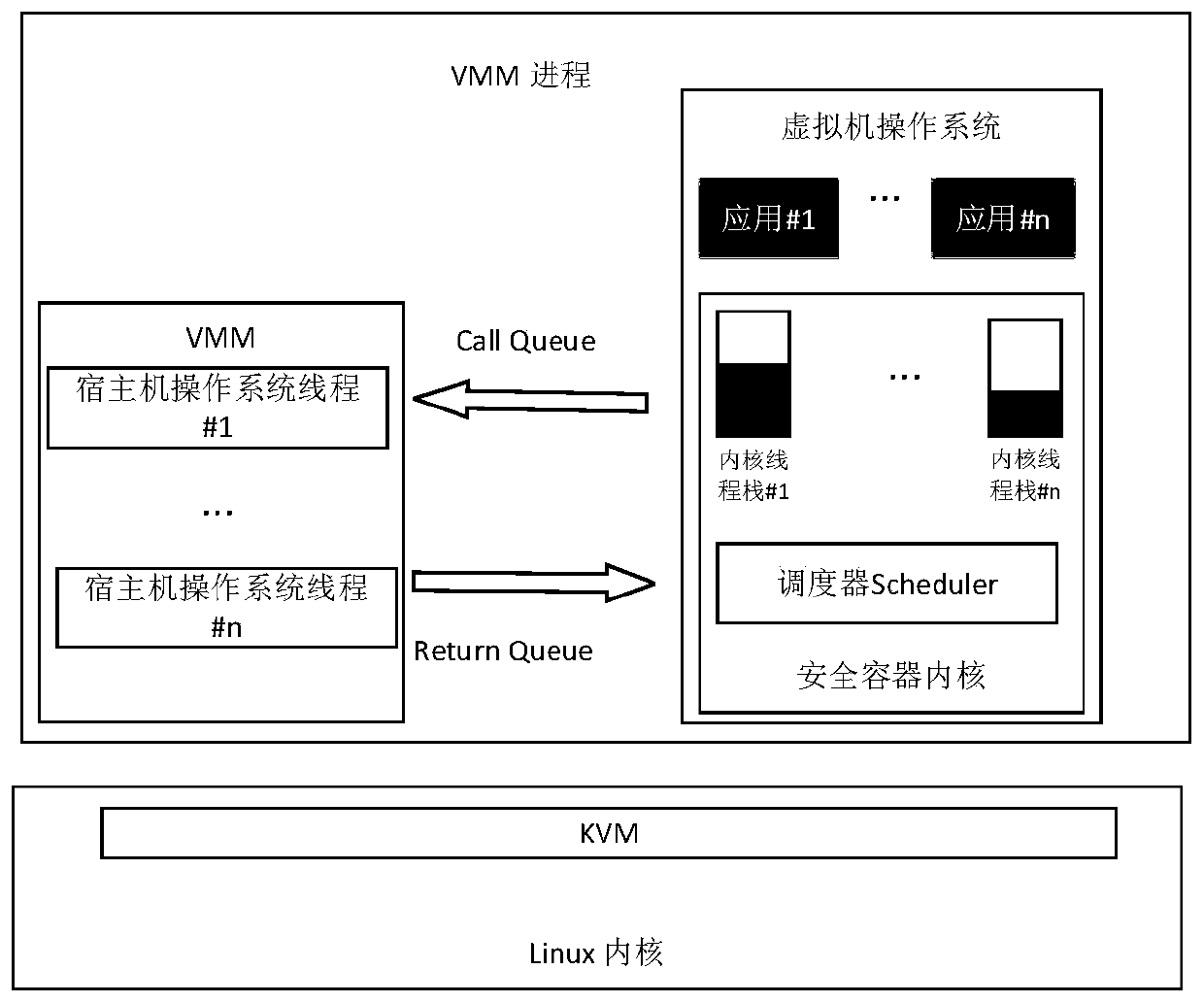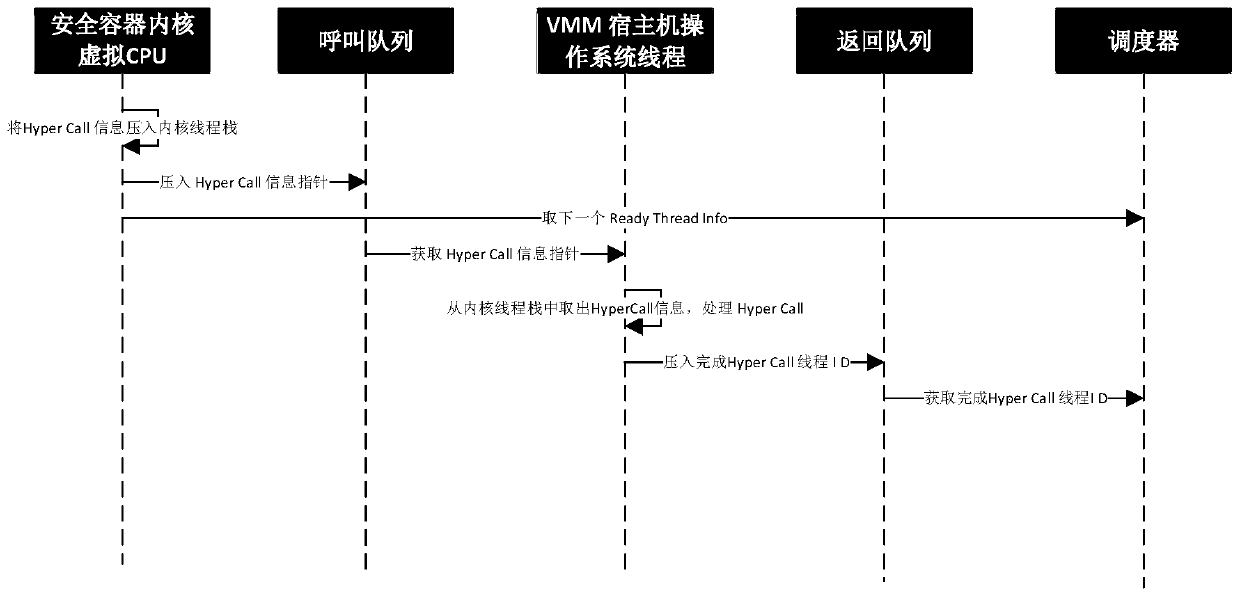Information scheduling method from secure container operating system to virtual machine monitor
A technology of virtual machine monitor and security container, applied in the direction of instrument, program control design, program control device, etc., can solve the problems of poor performance and high cost, and achieve the effect of improving execution efficiency
- Summary
- Abstract
- Description
- Claims
- Application Information
AI Technical Summary
Problems solved by technology
Method used
Image
Examples
Embodiment Construction
[0024] The technical solutions in the embodiments of the present invention will be clearly and completely described below in conjunction with the accompanying drawings in the embodiments of the present invention. Obviously, the described embodiments are only some of the embodiments of the present invention, not all of them. Based on The embodiments of the present invention, and all other embodiments obtained by those skilled in the art without creative efforts, all belong to the protection scope of the present invention.
[0025] The terms "comprising" and "having" and any variations thereof in the present invention are intended to cover a non-exclusive inclusion, for example, a process, method, system, product or device comprising a series of steps or modules need not be limited to the expressly listed Instead, it may include other steps or modules that are not clearly listed or inherent to these processes, methods, products or equipment. The division of modules presented here...
PUM
 Login to View More
Login to View More Abstract
Description
Claims
Application Information
 Login to View More
Login to View More - R&D
- Intellectual Property
- Life Sciences
- Materials
- Tech Scout
- Unparalleled Data Quality
- Higher Quality Content
- 60% Fewer Hallucinations
Browse by: Latest US Patents, China's latest patents, Technical Efficacy Thesaurus, Application Domain, Technology Topic, Popular Technical Reports.
© 2025 PatSnap. All rights reserved.Legal|Privacy policy|Modern Slavery Act Transparency Statement|Sitemap|About US| Contact US: help@patsnap.com


